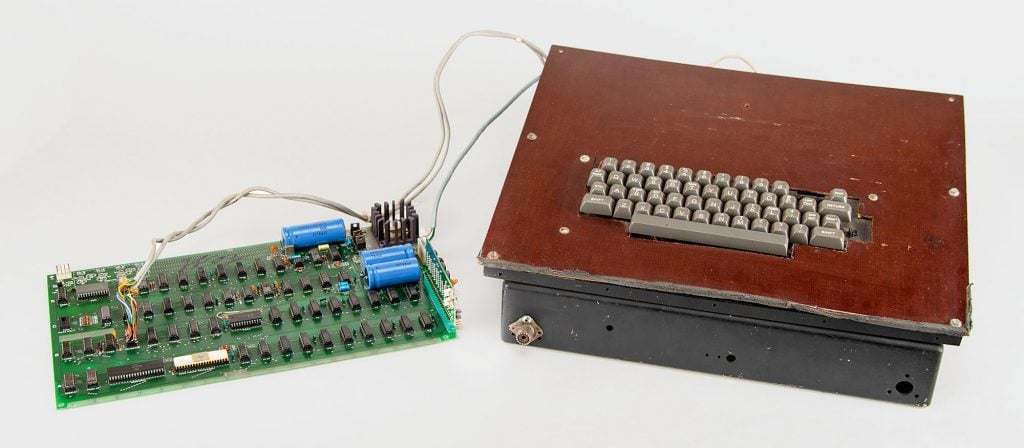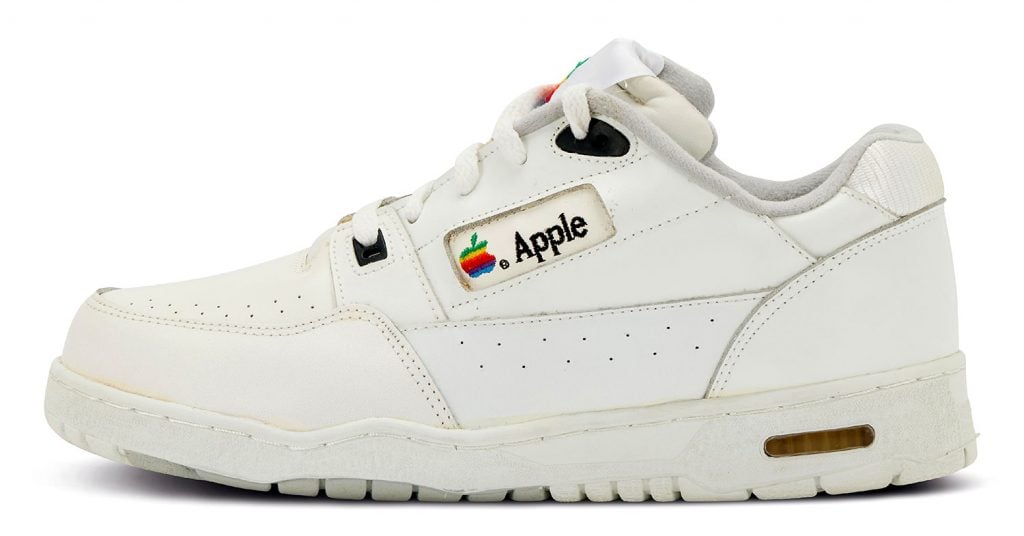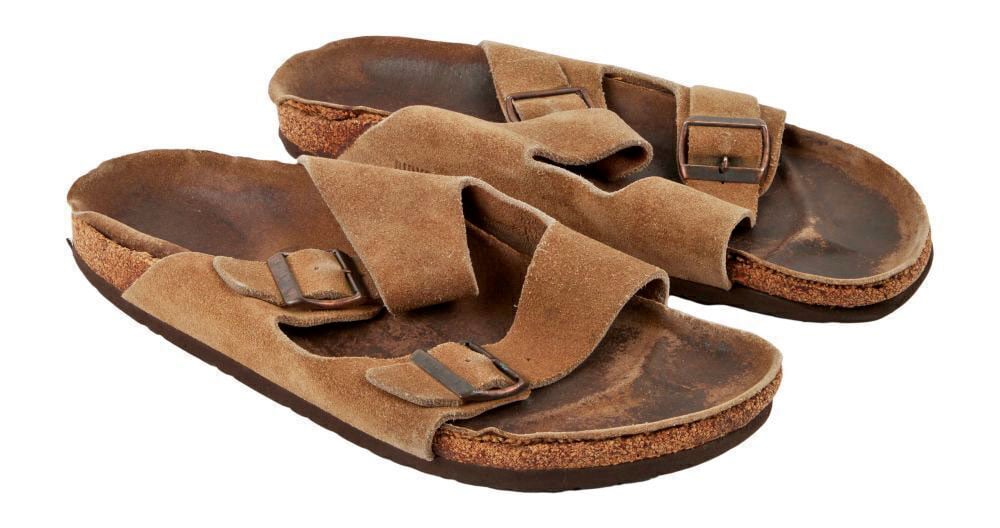A spate of vintage Apple products—ranging from high-tech to no-tech—have sold for eye-watering sums at auction recently, or soon will, as the secondary market for older items from the tech giant skyrockets and shows no signs of tapering off.
Let’s take stock. One sale, on through August 24 at RR Auction, is offering an Apple-1 computer (ca. 1976), designed by Steve Jobs and Steve “Woz” Wozniak as a bare circuit board to be sold as a kit to electronics hobbyists. As a result of the Apple-1’s success, the Apple II was introduced a year later and became one of the world’s first mass-produced personal computers. The antiquated yet fully functioning piece of hardware—one of only 200 produced, less than half of which survive—comes attached to the wood case supplied by the original owner. If the 2019 sale of an Apple-1 at Christie’s London for £371,250 ($471,000) is any indication, this DIY computer kit will likely soar past its $200,000 estimate.

An Apple 1 computer, made in 1976, is up for grabs at auction. Courtesy of RR Auction.
Another highlight from the auction is a bank check written for $116.97 and signed by Jobs and Wozniak, already smashing its estimate of $50,000. Paid to a circuit-board supplier, the temporary check was issued upon opening the company’s first bank account in 1976, predating the official founding of Apple Computer, Inc. by nearly two weeks. Interestingly, as the auction house notes, at this primordial stage of the company, any expenditure over $100 had to be approved by two of the three partners, which probably explains why both Jobs and Woz are signees.
“This temporary Apple check is one of the first documents ever signed by Steve Jobs and Steve Wozniak, predating the famous Apple agreement with Ron Wayne,” said RR Auction executive vice president Bobby Livingston. “The second Apple check ever written paid for the initial batch of Apple-1 circuit boards—the financial transaction that started the revolution.”

A bank check signed by Steve Jobs and Steve Wozniak has already smashed its estimate of $50,000. Courtesy of RR Auction.
Recently, in mid-July, a first-generation 2007 iPhone sold for nearly $200,000 (including premium) against an estimate of $50,000–$100,000, the latest in a string of record prices for the iconic smartphone. Vanishingly few 4G models were made in 2007, the year the phone was first released, months after Jobs revealed the handheld device at a MacWorld conference. The phone’s pristine, factory-sealed condition, as well as its spotless provenance (the consignor was an original Apple engineer), makes it an irresistible acquisition for tech collectors.
Sotheby’s, too, is muscling in on the resale boom, listing a pair of vintage Apple sneakers that it describes as “one of the most obscure in existence.” The ultra-rare sneakers, made in collaboration with Omega Sports in a men’s size 10.5, can be had for a flat $50,000.

These Apple sneakers from the mid-1990s were never sold to the public and this particular pair has never been worn. Courtesy of Sotheby’s.
The “new in the box” footwear was part of a one-time giveaway at an Apple sales conference in the mid-1990s, meaning the style was never sold to the public and this particular pair has never been worn. Composed of white leather uppers with Apple’s old-school rainbow logo on the tongue and sides, the shoes come with an air-cushion window in the heel and traditional white lacing (along with an alternative pair of red laces in the box).

The Birkenstock sandals belonging to Steve Jobs sold for $218,750 in 2016. Courtesy of Julien’s Auctions.
Even at $50,000, the sneakers are a steal compared to other Apple-adjacent footwear. Steve Jobs’s personal pair of brown suede Birkenstocks—which he reportedly wore throughout the 1970s and ‘80s, as far back as the legendary birth of Apple in a Los Altos, Calif., garage—were sold in 2022 for $218,750, allegedly the highest price ever paid for sandals. The same pair went for $2,000 in 2016—meaning, while the sandals were exhibited everywhere from Salone del Mobile in Milan to the Birkenstock headquarters in Germany, the current craze for Apple nostalgia isn’t going anywhere.
More Trending Stories:
The Company Behind the Wildly Popular ‘Immersive Van Gogh’ Experience Has Filed for Bankruptcy
Drake Outs Himself as Buyer of Tupac Shakur’s Iconic Crown Ring, Sold for $1 Million at Sotheby’s
Fast-Rising Artist Jeanine Brito’s Visceral Paintings Put a ‘Dark and Grotesque’ Spin on Fairy Tales
Follow Artnet News on Facebook:
